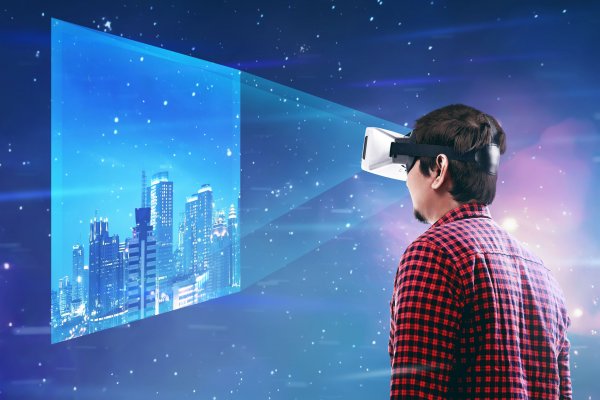Biggest Virtual Reality Trends in 2020
Tags: sponsored

By Samantha Stone
Virtual reality saw the world to meet the demands of education, trading, design and marketing. More and more users understand that virtual and augmented reality are the main trends of the future. Gradually, both trends will be implemented in the majority of industries. However, when it comes to VR software services, there are some obstacles that developers face while building new VR products. In this post, we’ll explain the difference between virtual and augmented reality, review the main options of VR software and the main trends related to VR software.
What Is the Difference Between Virtual and Augmented Reality?
Virtual Reality (VR) – where people need to wear a headset and get fully immersed in the computer-generated environment. Augmented reality (AR) is an interactive and immersive experience of a real-world environment. In this case, objects from the real world are improved by computer-generated information. AR is a more complicated challenge that requires a program to see an object in front of it. Today, we all use the AR tools. The most famous example is adding various cartoon options to selfie images.
Overview of the Main Virtual Reality Software Options
It goes without saying that VR software comes with tons of options that allow users to create a fully-fledged and immersive VR experience. Here’s a list of the most widely used features that are usually found in VR software:
- Editing content. Almost all VR solutions come with a set of powerful editing options. Users have a chance to edit 3D content even if they don’t have coding experience.
- Content management. There are lots of tools that enable users to upload raw 3D content and later edit it into a VR experience. As a result, users can control, store, and publish content at any moment.
- Hardware integration. It is clear that absolutely any VR solution needs to be integrated with the hardware that supports VR. For example, VR headsets or even mobile smartphones.
- Analytics. Some VR solutions are compelling tools that also include analytics options. Their overriding purpose is to provide business owners with information about the behaviour of audiences that use their VR content.
- Collaboration. Some VR tools come with a set of collaboration tools that allow various users to access the same solution remotely and work together in it. Users should be allowed to work on the same project simultaneously (playing games or organizing various events).
What Are the Main Trends of Virtual Reality Software for 2021
Most users experience VR for the first time while playing games or using various entertainment options. But that’s likely to change because very soon VR will be used in a number of consumer solutions. Here’s a list of the leading VR trends that should be considered by software developers:
- Increased availability. Such well-known providers of VR headsets as HTC and Oculus are gradually decreasing their pricing policy. But when these tools are more affordable, more users will start using VR technologies.
- 360-degree video. It’s a view that is demonstrated from all perspectives. It goes without saying that it guarantees a fully immersive experience. Moreover, modern studies proved that user engagement with such videos is rapidly growing. Therefore, we expect the increased adoption of this video format on a large scale.
- More VR developers are required. We can see that VR is rapidly growing. New technological achievements hit the market regularly. Therefore, more VR programmers are demanded. We can expect more job offers in the VR space in the next few years.
- New possibilities for VR offered by 5G. Fast mobile networks boost the performance of VR. 5G is fast enough to stream VR data from the cloud. Combining it with the cloud and 5G technology, developers of VR and AR tools will definitely face the necessity to build a low-powered and low-bandwidth environment. As a result, more users will get a chance to test VR because of cheaper headsets and more engaging and realistic VR simulations.
- VR for education. More VR tools will be built for education in 2021. Due to the immersive nature of VR, more pupils will have a chance to learn new material in funny new ways. Students can easily take a virtual trip to any place in the world. Moreover, VR has lots of benefits for distance learning. Distant students can be taught in powerful VR classrooms. As the demand grows, new educational programs and apps should be built to make the education exciting and engaging.
Overall, VR is gradually entering any life sphere, including healthcare, education, marketing, social media, entertainment and others. And we all know that demand breeds supply. People need the VR software, and experts who will build these tools are also needed. A professional VR software development team will first undertake in-depth research to test if there’s a potential market for your VR app idea, and after that, they will start working on this project. Therefore, if you have an interesting VR app idea that will meet the needs of your business and promote its development, hire experts in this field that will help you bring it to life.

Leave Comment: